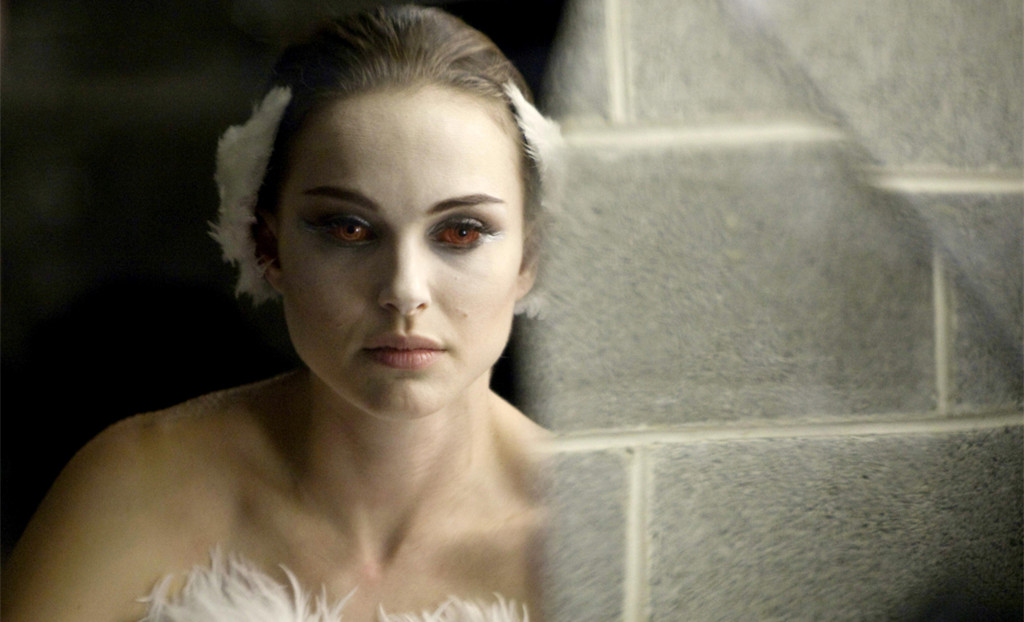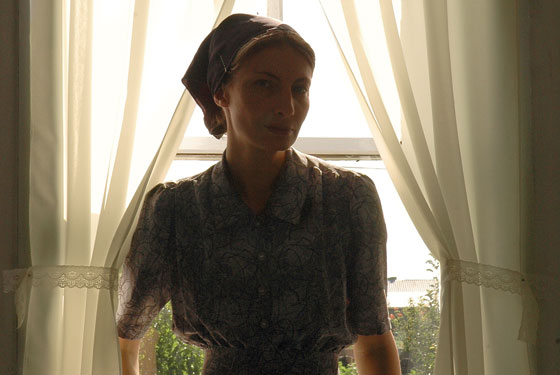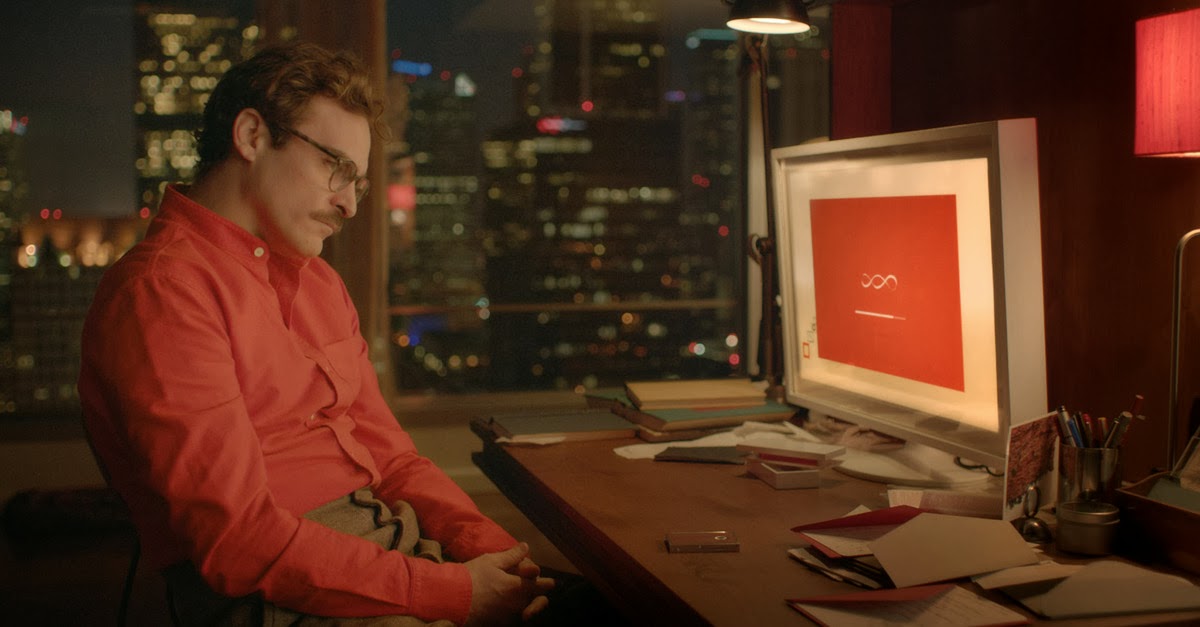Cinema is well over a century old now and we have been blessed to experience the films of several masters over this time period. Breaking new ground was relatively natural in the early parts of the past century because of the relative youth of the art form. While cinema is still much younger than the traditional fine arts, it has become more difficult for filmmakers to distinguish themselves from their predecessors (CGI and modern technology notwithstanding).
Most aspiring filmmakers recognize and acknowledge their influences; they also want to be identified as unique artists who aren’t relying too heavily upon the practices of those who came before. This list of 10 filmmakers is just a few of the artists who are succeeding in that regard. Most of these directors are well known, but a few are up-and-comers in the industry.
It should be noted that this list is not all-inclusive by any means. There are a vast number of original filmmakers who are not listed here for the purpose of brevity. Also, innovation is not synonymous with quality. Some of these filmmakers bit off more than they could chew on some of their projects and made poor films, even if they were innovative in their construction.
10. Darren Aronofsky
Aronofsky is on the short list of filmmakers who are hard to categorize, as his films tend to be quite distinct from each other. In 1998, he made waves with his feature-length debut Pi, a taut 84-minute film that tells the story of a partially insane mathematician who believes the world and its activity can be explained through patterns of numbers.
While Pi was certainly an eye-opening film to many filmgoers, Aronofsky truly broke out with Requiem For a Dream in 2000. The film benefited from spectacular performances (especially Ellen Burstyn as an elderly woman obsessed with infomercials), great editing, and of course superb direction from Aronofsky. His innovative screenplay combined with his brilliant use of cutting (especially in the film’s final act), helped elevate the film into one of the most memorable films of the 2000s.
His next film, The Fountain (2006), is seemingly a meditation on the cycle of life, death and the passing of time as it follows a doctor desperately trying to save his wife from a brain tumor. The film was not received as well as his previous efforts, though much of Aronofsky’s ambitions were praised. The film makes for an interesting viewing because of the film’s nontraditional narrative and impressive use of different filmmaking techniques including frequent match cutting. In recent years, the film has seen a resurgence in popular appeal, so perhaps the film will be regarded more highly in the future.
In 2008, The Wrestler marked a distinct departure from his previous work. Inherently a character study of a professional wrestler named Randy, ‘The Ram’ Robinson (Mickey Rourke in perhaps his best role), Aronofsky brilliantly eschews the stylistic visuals associated with his previous successes and instead lets Rourke carry the film with his heartbreaking performance. The film is an excellent character study and is also a rare glimpse into the world of professional wrestling.
Black Swan (2010) was a worthy successor (or companion piece) to The Wrestler and also a return to the more visually and narratively challenging themes introduced in Aronofsky’s earlier work. Natalie Portman’s portrayal of an overworked and desperate ballet dancer is remarkable and is probably her best performance. Aronofsky was inspired by Dostoyevsky’s famous novel, The Double, among others.
Like The Wrestler, the film was shot using Super 16 which gives the film a realist / documentary visual style vice the 35mm film more commonly used on other big budget films. Ironically, the grainer Super 16 film allows the effects-laden sequences in the film to feel more organic and thus more believable for the audience.
Aronosky’s latest film, Noah (2014), is his most ambitious project to date. The film is a retelling of Noah’s portion of the Old Testament and is a project that Aronofsky had always dreamed of. Noah’s place in the actual scripture is rather minimal, so Aronofsky inevitably had to take some artistic liberties with the story and characters. Public and critical reception was surprisingly positive considering that films of the Bible are bound to attract controversy. While not as innovative as most of his earlier films, the film is structurally sound (not unlike the Ark itself) and is driven by strong performances and impressive special effects.
Noah leaves cineastes wondering if Aronofsky will continue pushing the envelope or become more comfortable working on high budget projects. Either way, the past 15 years have been quite the ride.
9. Carlos Reygadas
One of the most acclaimed directors to come out of Mexico in generations, Reygadas’ four films to date have received recognition for their ambition and the craft that has gone into them. Known for his brave approach to cinema, Reygadas has not shied away from the depiction of controversial subject matter to include graphic sexuality, involving characters and physiques we aren’t used to seeing in cinema.
Whether or not one agrees with what is depicted in his films, Reygadas has made a conscious effort to capture life as it is. His propensity for using non-professional actors in his some of his films, recalling the work of Bresson and De Sica, brings a feeling of social realism to some of his work, yet he is as equally willing to dabble into the surreal.
Japón (2004), his feature-length debut, was well received at Cannes in 2004. He tells the story of a character that, unsatisfied by his current life, leaves Mexico City and travels to the countryside in order to end his life on his own terms. He bonds with a Native American widow and he subsequently contemplates the direction that his life has taken. The film was received with acclaim and also acquired a bit of notoriety with the depiction of perceived animal abuse that forced Reygadas to make cuts (rather insignificant cuts thankfully) to the film.
Battle in Heaven (2005) is Reygadas’ personal favorite from his filmography. The narrative involves Marcos, a low-level employee for a character named only as “The General”. Marcos is plagued by guilt because a young girl that he and his wife have adopted has died.
The film is mediation on Marcos and how he approaches the guilt that plagues him, in addition to his relationship with The General’s beautiful daughter (Anapola Mushkadiz). The film received mixed reviews, and most critics were unable to get over the explicit sexuality seen in the film (including fellatio). Either way, Reygadas’ use of editing and music as well as his ability to draw extraordinary performances from non-professional actors is remarkable.
Silent Light (2007) is a brilliant film that received almost universal acclaim. A rare glimpse of the German Mennonite community in Mexico, the film is as of yet the highlight of Reygadas’ work. Like his previous work, the film is methodical and shows a patience and understanding of cinematic techniques reminiscent of Ozu. The film is sparse on dialog and instead Reygadas uses nuanced performances and beautiful cinematography to tell the story of a man who is having an open affair with another woman. Plot descriptions do little justice to this brilliant film.
His latest, Post Tenebras Lux (2012), helped Reygadas win the Cannes Best Director Award in 2012. Using a non-traditional narrative, the film follows Juan (Adolfo Jiménez Castro) and his family (and various other cast members) as they experience life, heartbreak and death.
Shot in the 4:3 aspect ratio to highlight the beautiful mountains in the Mexican setting, the film has gorgeous cinematography. Reygadas was inspired by the landscape surrounding his home. Reygadas also shows a rare ability to weave the surreal into his films seamlessly without drawing overdue notice to it. After yet another masterpiece, Reygadas is on the short list of young foreign filmmakers making waves around the festival circuit.
8. Steve McQueen
Starting his cinematic career with a multitude of arthouse shorts, McQueen has only made three feature-length films. Rarely have only three films helped to solidify a filmmaker’s career like McQueen’s films have. As a director, McQueen doesn’t utilize special effects or narrative tricks to compel audiences. Instead, he pushes his actors to dark and desperate places to bring out the absolute best from his cast. His three feature-length films include some of the most memorable performances from the past twenty years.
Hunger (2008) tells the story of Bobby Sands, an Irish nationalist who goes on a hunger strike in prison in order to influence the British government. The film rarely leaves the prison and McQueen does not spare the audience any grisly detail of the acts that the Irish nationalist prisoners were willing to do in order to make a statement of protest.
Some of which includes rubbing their own feces on the walls of their prison cell, or receiving messages by swallowing paper and passing it later. The most disturbing segments of the film involve Michael Fassbender’s as Bobby Sands undergoing his hunger strike. Fassbender, truly dedicated to his role, starved himself in order to film these scenes, and his physical condition is disturbing to see on film.
Shame (2011), again starring Michael Fassbender, highlights sexual obsession and the damage it can wreak on every aspect of life. Fassbender plays Brandon, who is battling a chronic sex addiction, and thus struggles to maintain any personal relationships in his life outside of sex. His world comes crashing down when his problematic sister (Carey Mulligan) shows up at his New York apartment and interferes with his life needing a place to sleep and indirectly interfering with his addictions. The NC-17 rating inevitably hurt any chance of major financial success, but the film is a vivid and powerful portrayal of the dangers of oversexualization.
12 Years a Slave (2013) was a massive success and made McQueen one of the more popular filmmakers in the U.S. A disturbing account of Soloman Northrup’s true story of a man kidnapped and sold into slavery in the southern U.S. Again, McQueen holds no punches. In this film the brutality of slavery is filmed in the most convincing manner yet seen. Featuring a breakout performance from Lupita Nyong’o and another excellent roll for Michael Fassbender as a slave owner, the film was near-universally acclaimed as a masterpiece. Steve McQueen, with his three brilliant films, now has astronomical expectations for the rest of his career.
7. Spike Jonze
As versatile a filmmaker as they come, Spike Jonze has been a prolific writer, music video director, short film director and feature-length film director. His feature films have set the standard for films with brilliant scripts, topical themes, and moving performances.
Being John Malkovich (1999) was Jonze’s long-awaited feature-length debut. Charlie Kaufman, a good friend of Jonze, was credited with writing the script, but given the work that these two have done together; it is possible that Jonze was also heavily involved in the script. Either way, the film is about a puppeteer who finds a hole through into which he can go inside the mind of John Malkovich (who plays himself), a truly unique concept. The film met with rave reception and was later called on of the best films of the 1990s.
Adaptation(2002) had understandably high expectations after the success of his previous film Jonze delivered another masterpiece of modern cinema. In the film, Charlie Kaufman (who was responsible for the script) is attempting to adapt the non-fiction classic novel The Orchid Thief but is trouble by writer’s block. The narrative of the film has echoes of Fellini’s 81/2 and is equally entertaining to watch. The brilliant performances and unique narrative were universally celebrated.
Jonze’s latest, Her (2013), is probably his also his greatest. A film with an especially relevant theme in the modern age, the film is a meditation on the eroding person-to-person communication. The film takes place in the near future and chronicles Teddy (in a miraculous performance by Joaqin Phoenix) as he falls in love with an OS in the immediate aftermath of the his divorce.
It is later revealed that multiple people are falling in love or having serious relationships with their personal OS. The depth of feeling involving his failed marriage and subsequent relationship with the OS is not often reached in artistic endeavors. The film was an instant classic and was among the best films of 2013.
6. Shane Carruth
Shane Carruth, a writer, director, actor and composer for only two feature-length films, is one of the most promising young filmmakers in the industry. His two films, Primer (2004) and Upstream Color (2013), are among the most intelligent and well-made science fiction films made in the past 20 years. Made on relatively small budgets, the films eschew the CGI that grace (or plague, depending upon your point of view) modern science fiction films for unique plots and an organic style. He has flown under the radar thus far in his career, but it’s only a matter of time before he gets more mainstream recognition.
Primer was completed with only about $7000 and Carruth was responsible nearly every aspect in its creation, to include composing an original score. Not only is this the mark of a remarkable talent, it also acts as a reassurance to young filmmakers that a large budget is not mandatory to create a successful film.
The basic premise of the film is the accidental creation of a time machine in a personal garage. Once two people enter in the machine, they remain separate from the same two people outside of the machine, so by the end of the film there are multiple duplicates populating the setting. The film requires more than one viewing because of the complexity of the narrative and the multitude of scenarios involved. The film’s reception was overwhelmingly positive and was a hit at the Sundance Film Festival in 2004.
His next project, Upstream Color (2013) was another critical success that involves a microorganism that passes between humans, pigs and orchids and blots out the human’s memory and makes him or her receptive to hypnosis. The effect of sound on microorganisms is also examined. With a variety of complex themes, this is another film that requires multiple viewings. The film was even better received than its predecessor and was praised as one of the most inventive science fiction films since 2001. Carruth has effectively cemented himself as a highly creative and intelligence science fiction director.




